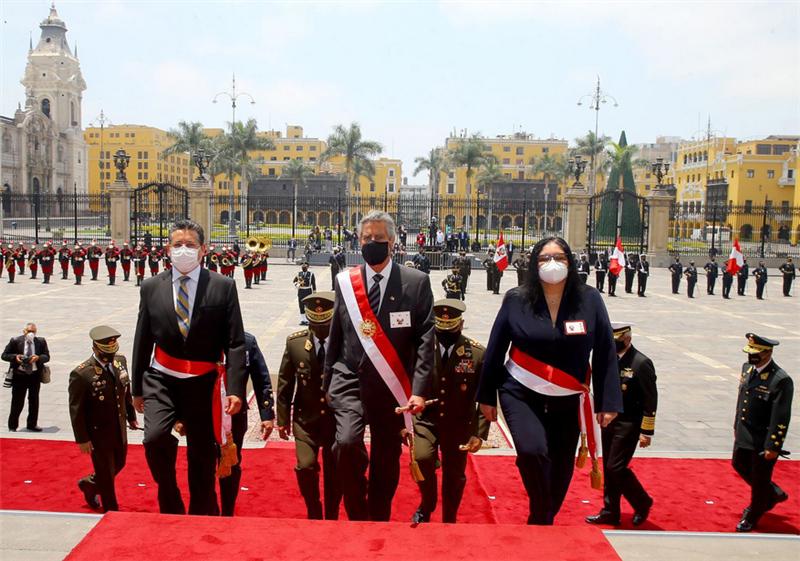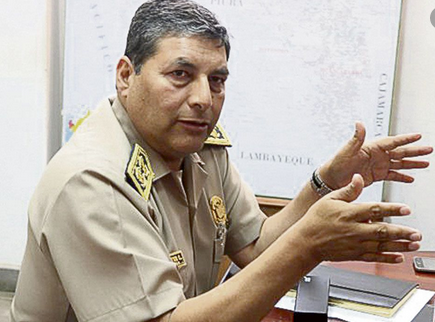
President Francisco Sagasti sent home three lieutenant generals and 15 generals of the National Police, in a drastic measure to renew the entire high command in the force. The officers include Lieut. Gen. Jorge Lam, who was in charge of operations in Lima until this week.
General Cesar Cervantes, with 30 years in the force, has been appointed national police chief. Cervantes’ most recent post was as police attaché to the Peruvian Embassy in Madrid.
Sagasti’s decision was prompted by the unnecessary and excessive police violence in the protest marches last week during the five-day Manuel Merino regime, particularly on Nov. 14 when two young men were killed and several gravely injured.
The police reforms, however, also cover much wider issues of inefficiency, poor training and rampant corruption.
The Executive’s decision has been congratulated by Jan Jarab, the United Nations’ Human Rights representative for South America, who was in Lima last week to report on the political crisis and the protests.

The protest marches throughout the country were, for the most part, peaceful and police were on hand to oversee and assist. In Arequipa, police handed out protection masks and small bottles of alcohol. But in Lima, they were more aggressive and, on the streets near the Congress building, openly violent. According to numerous reports, both President Merino and his premier, Antero Flores-Araoz, encouraged the police to quell the protests as forcefully as necessary.
Heavily protected police used what are described as kinetic impact projectiles, pellets and rubber bullets, and glass marbles using shotgun casings. These weapons are considered non-lethal, but they can seriously injure and even kill. One of the victims on Nov. 14 died from countless pellets shot in his face and neck, while an injured protestor had a glass marble lodged between his ribs and another will remain paraplegic from shots in his spine.
Besides the recent violence, reminiscent of the military regime and years of internal conflict in the 1980s and 1990s, a key factor in the changes being made by President Sagasti is the rampant corruption in acquisitions. This year, specifically, the purchase of faulty and overvalued personal protection equipment has caused multiple deaths from Covid-19 among police who were on the front line, according to the new minister of Interior, Ruben Vargas.
The major step against corruption is the hiring of civilian management staff, through the national civil service authority, Servir, to administrate Police funds for contracts and acquisitions, and improve administrative systems. The Comptroller General’s office will also intervene to ensure the execution of the police budget is transparent. A commission of civilian experts and police is being appointed to work with the Interior minister to recommend actions to modernize and strengthen the force and is expected to file a report in 60 days.
“This is a huge step towards modernizing and strengthening the national police force,” Vargas said, describing the move as historic.
Farid Matuk, former head of the National Statistics Institute and a former member of the Prospective Covid-19 group, hailed the decision to hand over administration of the police budget to Servir as a mega-reform. “Essentialy, it transforms Servir into a supplies unit which, if successful and put into general practice, is revolutionary,” he tweeted.
The former deputy minister of the Interior, Ricardo Valdés, approves the changes to be made. In an interview on RPP radio, Valdés emphasized the need for good training. Valdés said poor practices in the police force can be prevented with a review of the educational and training structure, reinforced with continued training, and also improved work shifts and wages.
The overall reform includes strengthening the Protection System for families of victims of police violence, focusing on the recent cases and the medical brigades that provided support to injured protesters, which is being organized in coordination with human rights groups. Relatives of several of the victims, including of those who were killed, have reported police harassment after the protests.
The President said this was the safest way to achieve reconciliation and regain the public’s trust in their police force. He recognized the dedication and service of many police, who have exposed their lives — and some who have lost them— in the fight against the pandemic while on duty.
“Time is short and the task is great. We are all together in this,” said Sagasti, who has eight months in which to make changes before a new administration, to be elected in April, is sworn in.






I like this site and how well they inform us about my country, Peru I will recommend this site to my friends and family